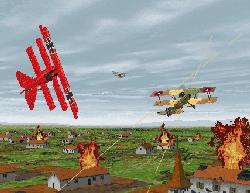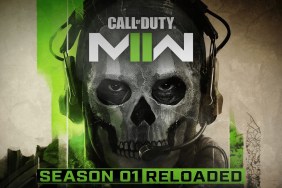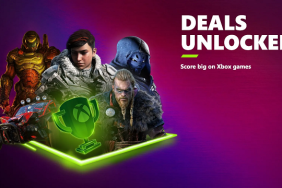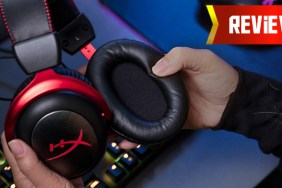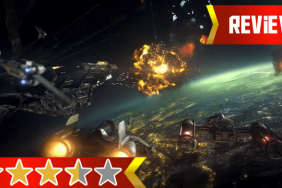More fun than eating the cardboard pizza!
An absolute breakthrough year for flight sims, one can barely keep track of the
staggering number of new products. Realistic flying took off with three new titles
this year: Flight Simulator 98, Pro
Pilot and Flight Unlimited II. Modern air-combat
was also ripe for change: 1997 brought us EF2000 2.0, F/A-18 Hornet 3.0, F-22
Raptor, iF-22, iF-16, Joint Strike Fighter, and Jetfighter III. Massive
online combat continues to grow with Warbirds 2.0 and Air
Warrior III. And not to be left out of the fray, helicopter sim fans enjoyed
the astounding Longbow 2 and the less realistic, but just as fun, Hind.
In short, our beloved genre — one that not too long ago was considered only a
niche market — hit the big time in 1997, and this is why it must be considered
a breakthrough year.
On the other hand, the same
problems that have always plagued flight sims continue to stay with us. The
sheer number of new sims and the growing interest in the genre has tended to
mask the still slow evolution of the games themselves. With every new advance
(great graphics, realistic physics, stunning multiplayer) some other element
is bound to get left behind (i.e., a good campaign system, enemy A.I. or ease
of use). Red Baron II, like its main competitor Flying Corps Gold,
is not without its share of problems, but Red Baron II did manage to
give me one of the best experiences I have ever had playing a flight simulator.
The emphasis is on the word play because Red Baron II is damn fun! A flight simulation that also purports to be a game should be measured by three standards: realism, immersion, and playability. Immersion refers to the game’s ability to set the mood and place you within the imagined situation. The realism of the sim includes not only the flight model, but also the accuracy of the graphics, historical situation, enemy A.I. and weapons systems. And last but certainly not least, playability: the measure of control elegance and fun. These three categories cannot be strictly separated — good graphics will enhance the immersion and the fun, for example — but they are useful concepts nonetheless. Let’s begin with immersion.
Put simply, Red Baron II is the most immersive flight simulator I have ever laid my hands on. The total experience begins with the print manual. In addition to 60-plus pages of historical info, plane sketches, black and white photographs, and theater maps, the basics of dogfighting tactics are illustrated through the beautiful retelling of now-legendary stories. Tales like the Udet/Guynemer dogfight literally made me shout with surprise and excitement! (Now when is the last time a game manual made you happy?) Similarly, all of the game menus feature historic photos and some even have ambient animated flight sequences in the background. In-game flight maps are appropriately tattered; old school black boards and chalk detail your mission accomplishments; and full motion video (complete with grainy 3-2-1 film countdown) supplements intelligence reports and post-combat statistics. If that weren’t enough, there are photographs and bios of most famous aces (don’t believe the bit about the AI simulating trademark movies, and you can even redesign the paint job on your plane if you reach the appropriate rank.
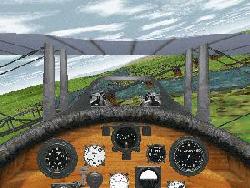 The detail doesn’t stop when
The detail doesn’t stop when
you climb into the cockpit. Though Red Baron II is currently not 3D accelerated
(a patch is promised for the 2nd quarter of ’98) the graphics are solid and
the rolling green hills of the French countryside offer a nice alternative to
the all-too-common desert terrain found in jet-fighter sims. Flying over towns
is exhilarating and shooting ground targets is just as fun, if not more, than
your traditional dogfighting: there are tents, bunkers, barracks, factories
and aerodomes all waiting for your bullets. The planes themselves are nicely
modeled and pretty enough to inspire the use of the outside cameras even when
you don’t need them. Turning your head produces changes in sound based on the
position of your ears: you’ll hear your engine, air-raid sirens, explosions
from ground fire, church bells, and during hard turns the creaking of your wings
and your pilot’s own grunting. Apart from the solid graphics, sound and terrain,
a number of small details will continue to crop up even after days of play.
Once my plane caught on fire and my pilot (on fire as well) jumped out of the
cockpit and screamed to his death. Another time I crashed and a Red Cross truck
came and pulled me from the wreckage. Nice!
Next up, playability. The absence of radio communications, the limited flight instruments and the rudimentary weapons in WWI planes makes Red Baron II one heck of a game. Everything becomes a lot more personal. After clocking more than 40 hours, I am still unable to withhold verbal taunts and shouts each time I put the bead on an enemy plane. Dogfighting is just not as fun in a jet fighter with computer controlled weapons and blazing speeds. In a Nieuport 17, on the other hand, you can fly right up to your opponent and see his square computer-generated head before ripping holes in his plane one wing at a time, eventually sending him to his death. If you’re lucky, you’ll even be able to circle back and watch him crash and burn.
In a WWI combat sim, the view system is extremely important. No radars on these babies! The recently released Red Baron II patch includes 20 lockdown views (nope; no snap views), six outside cameras, and a flexible slewing mode. The lockdown views in the initial release were a bit of a disappointment — there were blind spots all over the place and you couldn’t look up. The patch fixes all this: no more blind spots, plenty of views. With the exception of the target and follow cam, I found the outside cameras very difficult to use for dogfighting, though quite useful for locating enemies, navigation and beauty shots. The slew cameras are the most flexible and the most valuable for combat. They work in two basic ways. You can press and hold the Enter while using the joystick to move your head in any direction you choose, or you can select a target (friendly, enemy, object or landmark) and then press a key to automatically train your view on the selected target. It takes some time to learn to fly your plane while looking in another direction, but once you get it down, it works quite well.
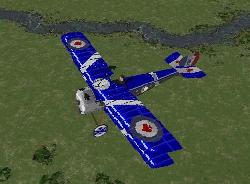 Another control (and thus
Another control (and thus
playability issue) is the joystick/rudder system. You absolutely have to
use a joystick to play this game or you will get nowhere. But that’s true
of any flight simulator. With Red Baron II, however, you will also have
a tough time reaching your maximum potential without a set of rudder controls
or a stick that has rudder controls (try the Thrustmaster Millenium 3D or the
Microsoft Force Feedback). Unlike the rudders in the original Red Baron, Red
Baron II keyboard rudders move in increments of 25% and are very difficult to
use effectively. Though I have enjoyed the game immensely without rudder pedals,
you’ll want a better control device to maximize your skills.
And now, to the realism. While every plane you can fly in Red Baron II has a unique flight model (all 22 of ’em), I have seen historical specs that might suggest the modeled planes are not accurate representations of the real thing. Like all historical “facts,” however, this is actually an issue of interpretation. In an attempt at accuracy, Dynamix designers reportedly consulted not only the plane’s spec sheets, but also pilot testimony and the visual evidence of WWI flight films. (If you don’t believe the Winbench scores for your Matrox Millenium graphics card, why should you believe the top speed as reported by the makers of the Camel Stopwith?) All things considered, flight models for these planes is a guessing game — educated guesses, but guesses nonetheless. It doesn’t take a historical scholar, however, to realize that the flight model “guesses” Dynamix made are just off–no matter whose figures you are using. Thankfully, the developers have acknowledged the problems and FM fixes are promised over the coming months.
The issue of realism doesn’t stop there, however. For Red Baron II models more than just planes. The sophisticated dynamic campaign system — which creates missions based on historical detail — contributes to the realism and, for the most part, it does seem on target. If you fly as an American before the Americans entered the war, you must sign up with a French squadron. Planes like the Fokker Dr.I don’t make their appearance until the historically appropriate moment and you will certainly recognize some legendary pilots and their planes. The enemy A.I. seems realistic as well. Some pilots seem less than skilled and over-cautious; others are courageous aces with a chip on their shoulder. Considering that so few WWI pilots made more than two or three kills in their career, it makes sense that most wingmen are not gung-ho aces. However, in some cases, this same realism detracts from the game. Many missions can pass without enemy contact at all — your flight leader may be on the cautious side and will choose not to engage less threatening enemies. Of course you can break formation and engage the enemy on your own (you may even win a medal for bravery), but you better be skilled enough to take on multiple aircraft! Three points that definitely need some work are the accuracy of enemy ground fire (too tough),the enemy AI skill (sometimes it seems like the difficulty setting has no effect) and countless statistical errors (dead pilots reappear, the kill board gets mysteriously wiped clean, and dates are often recorded incorrectly). Hopefully these problems will be addressed in future revisions.
All told, Red Baron II just may be the crossover title to introduce the casual gamer to the wonderful world of simulations. It makes perfect sense, then, that Red Baron II should close out 1997 — the year that sims significantly expanded their audience. Easy to learn and use, but challenging to master, this totally immersive experience will not only create interest in the historical situation it represents, but provide months — maybe even years — of exciting gameplay.
-
+Startling fun and easy to learn!
-
+Great atmosphere
-
+Good campaign system
-
- Underdeveloped multiplayer
-
- Heavy system requirements
-
- Nitpickers beware: flight models are funky
